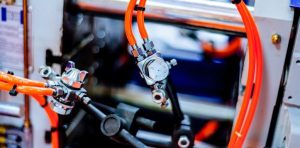
Curious about the differences between urethane casting and injection molding?
According to Pacific Research Laboratories:
“Both urethane casting and injection molding are great tools when a creator is working with a plastic design as they allow for rapid creation with a significant amount of detail. These tools aren’t entirely identical, but they have a lot of similar traits, making them easy to mix up. However, urethane casting vs injection molding can yield some vastly different results.
“Probably one of the most straightforward differences between the two is that urethane casting uses low pressure when adding the liquefied material to the mold. It’s simply poured in. Meanwhile, injection molding forces the material into the mold rapidly. While the difference seems minor, it can create vastly diverse end products for entirely different goals.
Comparing Urethane Casting vs Injection Molding
“Both urethane casting and injection molding are typical in manufacturing, and they have some basic similarities as well as uses. They both make use of molds and are both designed to work with rigid and soft non-metallic materials. However, their processes are a world apart.
Urethane Casting
“The urethane casting process starts with a master pattern, typically created through CNC technology or 3D printing. The design goes into a custom-fitted chamber, which is then filled with liquid silicone. Once it’s solid, it’s cut in half and opened, creating male and female mold parts. The mold is then reassembled, and the material is poured in. It is then placed in a heated chamber to set. When it’s removed, a technician will clean up the part and move onto the next one.
Injection Molding
“Injection molding consists of an injection mechanism, a two-part mold made of aluminum or steel, and a clamp to hold the pattern in place. Solid plastic pellets go into the injection unit and are heated until they melt. The unit pushes the molten plastic forward, forcing it into the mold. The mold opens, and the part comes out. It then closes again, and the machine begins the process of creating a new part. This all happens in only minutes.
“While they seem similar at first blush, both these processes have different uses, as well as pros and cons.
“Urethane casting is best for low-volume and prototyping due to its low cost and limited durability.
“Injection molding is one of the most common manufacturing methods when creating plastic products for the mass market.
“It’s not uncommon to use both urethane casting and injection molding during the life of a project—just for different reasons. Urethane casting may be ideal for working out the initial kinks in a design. Injection molding, meanwhile, is the best solution when mass-producing the products. It’s vital to work with a firm that can guide the creator on when it’s best to move to the next stage.
Making the Right Decision to Support Your Project
“While urethane casting is an excellent tool for prototyping, it’s not the only viable option out there. 3D printing is also a smart way to develop a prototype, especially if the creator is still trying to iron out their complete design. Urethane casting, meanwhile, can be good for late-stage prototyping, as it allows for significant detailing and can provide a near-perfect model of the final product. Meanwhile, plastic injection molding is a tool best used in actual manufacturing.
“When balancing urethane casting vs injection molding, it’s vital to work with experienced manufacturers to ensure these processes occur at the right stage of the product development process. These individuals will have the knowledge necessary to make the right call and provide a better project ROI. They may also be able to suggest alternatives outside these two methods that may be a better fit. In any case, both are time tested methods of product development and manufacturing that should be examined with a critical eye before making any major production plans.”